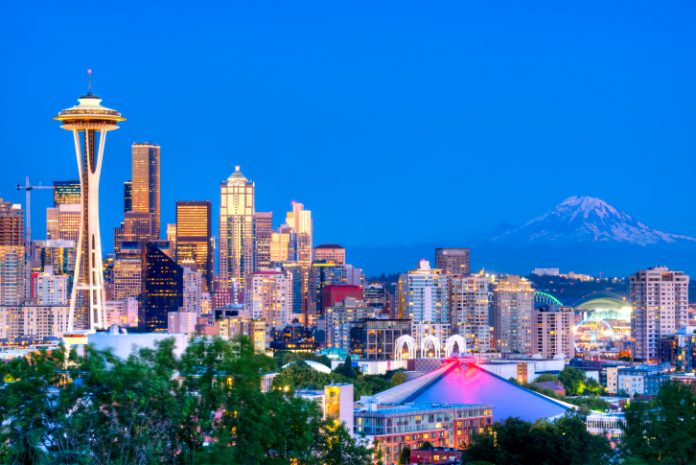By Timothy Schumann
(The Center Square) – With prices at the pump soaring, the Washington State Department of Ecology held its first Allowance Price Containment Reserve auction on Wednesday for the cap and trade program that went into effect at the beginning of the year.
Per the Climate Commitment Act passed by the state Legislature and signed into law by Gov. Jay Inslee in 2021, Washington’s cap and trade program requires emitters to obtain “emissions allowances” equal to their covered greenhouse gas emissions. Similar to stocks and bonds, these allowances can be obtained through quarterly auctions hosted by the Department of Ecology.
According to the statute from which the Allowance Price Containment Reserve auction draws its name, these carbon credits are supposed to “help minimize allowance price volatility in the auction.” The APCR is a separate pool of allownces made available when the prices at a quarterly auction exceed a certain level.
“The allowances in the APCR are taken from the allowance budgets from every year,” Department of Ecology spokesperson Claire Boyte-White told The Center Square. “The use of those credits does not increase emissions capacity beyond the cap.”
These APCR carbon credits are “swept up” as a portion of the total credits for all allowable emissions.
“We frontloaded 5% of all the allowances from 2023 to 2030, reduced them all by 5%,” Boyte-White said, citing the statute that requires this future clawback.
Those allowances are then put into the APCR auction pool, which is fully funded through 2030, with all 18.65 million reserve carbon credits from that seven-year period.
But these credits aren’t a new supply. They’re borrowed from a portion of each future year’s allocations.
APCR credits differ from standard quarterly auction credits.
“APCR allowances don’t have a vintage, like a wine, which means they can be used to cover emission from any year, which makes them valuable,” Boyte-White explained.
The special credits, however, do have a drawback in that they can’t be traded on the open market.
“They’re valuable, but they’re only valuable for emitters,” Boyte-White noted. “In our methodology, we said this tool is designed only to contain allowance costs for businesses, not for investors.”
The idea is these credits will provide relief for businesses that need to offset their emissions in Washington by acting as insulation from the speculative carbon credits trading market.
What exactly that speculative market looks like remains to be seen.
“Nov. 1, 2024 is the first compliance deadline, and it’s for 30% of 2023’s emissions,” Boyte-White said, pointing out the worth of these carbon credits won’t be known until businesses acutally need to spend them for program compliance reasons.
This means the market could see a large price variance until that first compliance deadline. It’s expected prices will go up, as the supply is intended to be restricted.
“[Available carbon credits] decrease by 7% per year until 2030,” Boyt-White said. “It’s a substantial amount.”
Credits from Wednesday’s auction are from two separate tranches, priced at $51.90 each for the first, and $66.86 for the second. Each tranche consists of 527,000 credits.
The state will collect nearly $62.5 million if all 1,054,000 allowances are sold.
Washington’s initial two quarterly auctions in February and May grossed a combined $857 million.
The auction is closed bid fixed price, meaning the only variable is how many shares each entity wants. Entities can bid for any number of shares, any number of times, at either price tranche, though the higher priced tranche will only be eaten into if demand for the lower tranche is exhausted.
Another potential pressure release valve for the price is linkage, or integrating Washington’s carbon credit market into other regions such as California or the Canadian province of Quebec.
The Center Square asked about any such plans.
“It’s a long way off,” Boyt-White said, citing complex interstate and international agreements that need to be taken into account.
Preliminary results from Wednesday’s auction are scheduled to be released Aug. 16.
Timothy Schumann is a staff reporter for The Center Square.
Originally published by The Center Square. Republished with permission.
To read more about carbon cap and trade, click here.
To read more about Washington carbon cap and trade policies, click here.


























